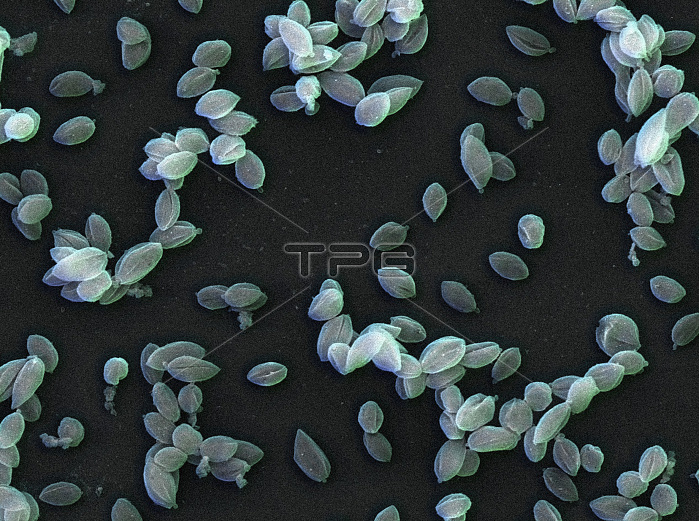
Scanning electron micrograph of Leishmania mexicana parasites. Leishmania mexicana is a unicellular eukaryotic parasite, and is one of the species of Leishmania that causes the disease Leishmaniasis. It is sometimes called the "flesh eating parasite" because of the skin lesions it can cause. These cells are in the amastigote life cycle stage, the life cycle stage normally found inside macrophages (a type of white blood cell) inside a person. Leishmania parasites are transmitted through the bite of an infected sand fly. Each parasite is 3-4 micrometres long and 1-2 micrometres wide. Supplied by University of Oxford, Richard Wheeler, courtesy of Wellcome Images.
| px | px | dpi | = | cm | x | cm | = | MB |
Details
Creative#:
TOP22239011
Source:
達志影像
Authorization Type:
RM
Release Information:
須由TPG 完整授權
Model Release:
N/A
Property Release:
No
Right to Privacy:
No
Same folder images:

 Loading
Loading